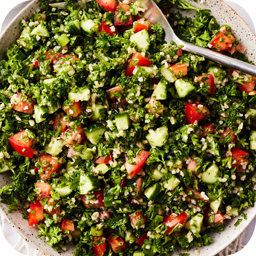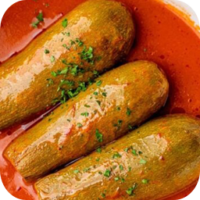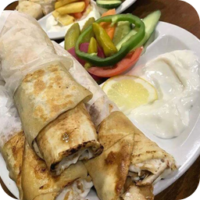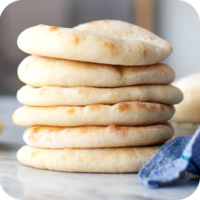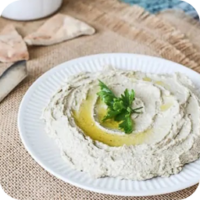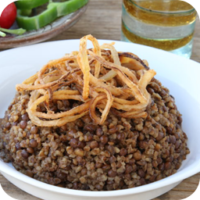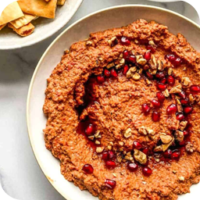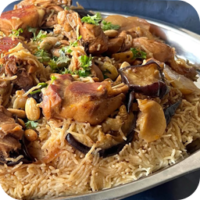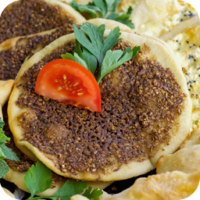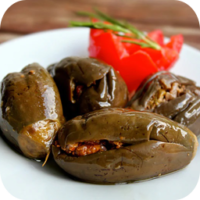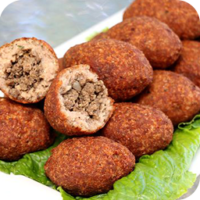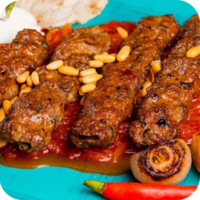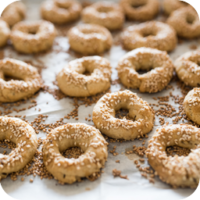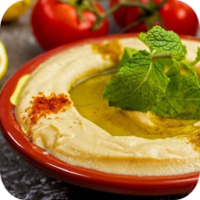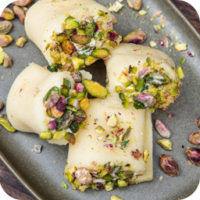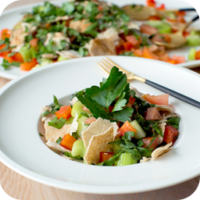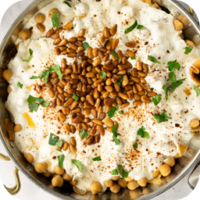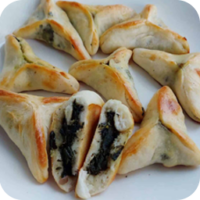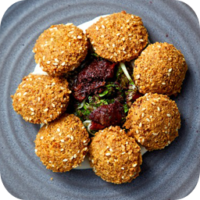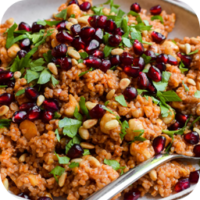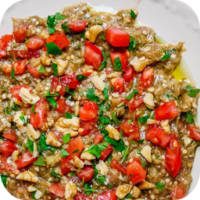Syrian Tabbouleh is a traditional and refreshing salad that originates from the Levant region, especially Syria, Lebanon, and Palestine. It is a popular dish in Syrian cuisine, known for its vibrant and healthy ingredients. Tabbouleh is made primarily with parsley, bulgur wheat, and a variety of fresh vegetables, such as tomatoes and cucumbers, along with olive oil and lemon juice to dress it. This salad is known for its bright flavors, light texture, and nutritional benefits, making it a perfect accompaniment to a variety of Middle Eastern meals.
Key Ingredients:
- Parsley: The main ingredient in Tabbouleh, giving the salad its distinct green color and fresh, herbal flavor. The parsley is finely chopped.
- Bulgur Wheat: A cracked wheat product that is the base of the salad. It provides texture and absorbs the dressing. It is usually soaked in water until soft.
- Tomatoes: Fresh, ripe tomatoes are diced and added for juiciness and sweetness.
- Cucumbers: Optional in some recipes, but they add a crisp and refreshing bite to the salad.
- Green Onions: Sliced green onions or scallions are added for a mild, sharp flavor.
- Lemon Juice: Provides acidity and freshness, balancing the richness of the olive oil.
- Olive Oil: A key ingredient for richness and depth of flavor.
- Mint: Some variations of Tabbouleh include mint, which adds a refreshing and aromatic note.
- Salt and Pepper: Used to season the salad to taste.
Preparation:
- Soak the Bulgur: The bulgur wheat is soaked in warm water for about 15 minutes, allowing it to soften and fluff up. After soaking, any excess water is drained.
- Chop the Vegetables: The parsley, tomatoes, cucumbers, and green onions are finely chopped to ensure a balanced texture and easy eating.
- Combine Ingredients: The soaked bulgur is mixed with the chopped vegetables, parsley, and green onions.
- Dress the Salad: The salad is seasoned with olive oil, lemon juice, salt, and pepper. Fresh mint can be added at this stage if desired.
- Chill and Serve: The salad is typically allowed to chill for a little while in the refrigerator to let the flavors meld. It is served cold.
Serving Suggestions:
- As a Side Dish: Tabbouleh is often served alongside other Middle Eastern dishes like hummus, falafel, kebabs, or shawarma. It works as a refreshing side dish that complements the richness of grilled meats.
- As a Main Dish: Tabbouleh can be served as a light main dish, especially for vegetarians, paired with pita bread or labneh (strained yogurt).
- With Mezze: It is also part of the traditional mezze spread, a collection of small dishes commonly served as appetizers in Syrian cuisine.
Cultural Significance:
Tabbouleh is considered a symbol of Levantine cuisine and is a common dish in many Syrian homes. It’s a popular choice for gatherings, celebrations, and large meals due to its freshness and ability to pair well with many different dishes. In Syria and Lebanon, Tabbouleh is not just a salad but a representation of local agricultural produce, particularly fresh herbs, olive oil, and lemons. It is a dish that highlights the region’s emphasis on fresh, simple, and healthy ingredients.
Variations:
- More Parsley, Less Bulgur: Traditional Tabbouleh contains far more parsley than bulgur, making it a “herb-heavy” salad. Some variations may use more bulgur to suit personal preferences.
- Mint: Some recipes include fresh mint for added freshness.
- Tomato and Cucumber Variations: While cucumbers are often included, some recipes omit them, and the quantity of tomatoes can vary.
- Vegetarian Version: Tabbouleh is typically vegetarian and can be adjusted for vegan diets.
Nutritional Benefits:
- High in Fiber: The bulgur and parsley provide fiber, which supports digestion.
- Rich in Vitamins and Antioxidants: Parsley and tomatoes are excellent sources of vitamins A, C, and K, along with various antioxidants.
- Healthy Fats: Olive oil offers healthy monounsaturated fats, which are good for heart health.
- Low in Calories: Tabbouleh is a low-calorie dish, making it a great choice for those looking for a light and healthy salad option.
Conclusion:
Syrian Tabbouleh is a fresh, vibrant, and nutrient-packed salad that has become an iconic dish in Levantine cuisine. Its combination of fresh herbs, bulgur, and vegetables, along with a tangy lemon dressing, makes it a refreshing side or main dish. Tabbouleh is not only healthy but also represents the essence of Syrian cuisine, showcasing its love for fresh, simple ingredients. Whether served as a side dish at a large feast or enjoyed as a light lunch, Tabbouleh is a delicious and versatile addition to any meal.

